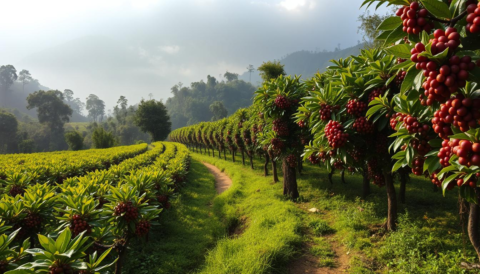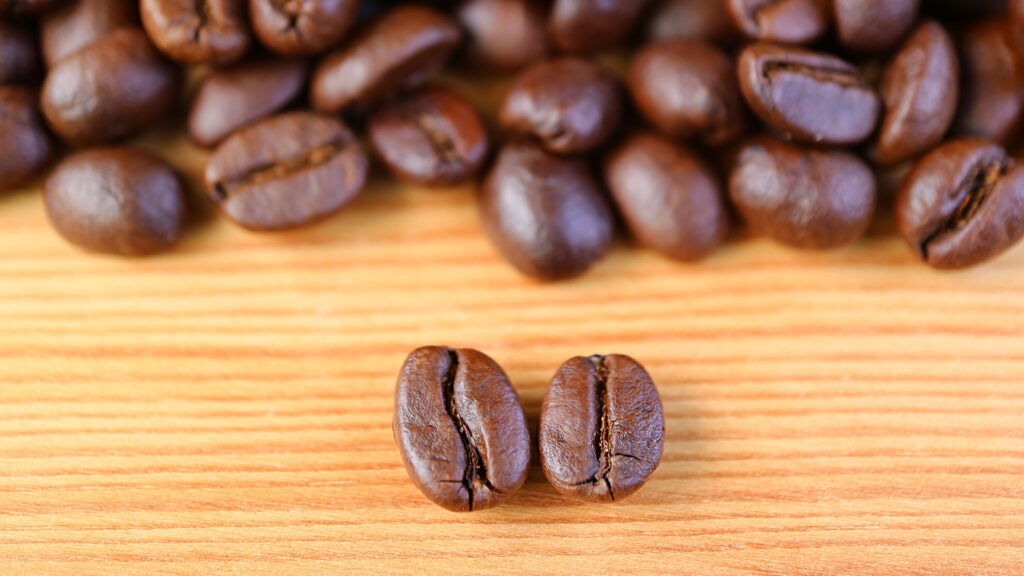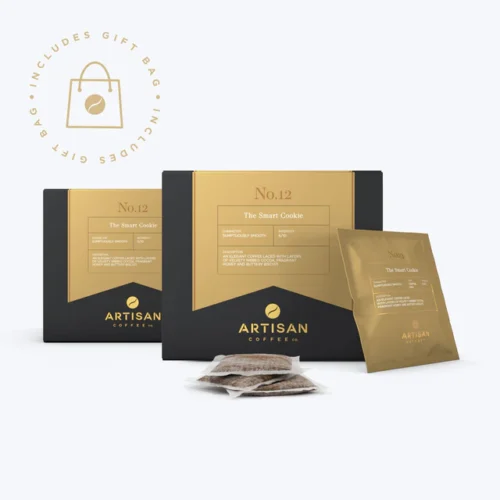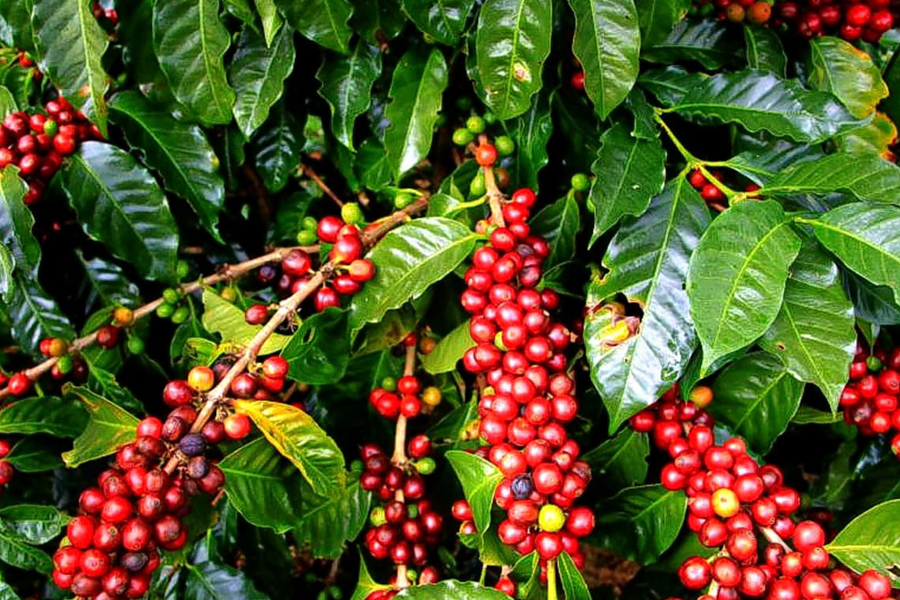What is coffee … other than the beverage of choice for people with excellent taste, that is.

An even more accurate question might be what is coffee made of? Coffee beans, sure – but did you know those are actually seeds found inside the cherries (also called the fruit) of coffee trees? They grow in more than 40 countries around the world, and when dried, roasted, and ground, the seeds are used to brew coffee.


What is coffee made of? Meet the coffee tree.
Coffee trees have range. They can be anything from small shrubs to tall trees, and if they’re not pruned, they can grow to more than 30 feet (9 meters) high. Their veiny, waxy leaves can measure from one to 16 inches in size, and their colors can range from purple to yellow to dark green (the most common). Each tree is covered in leaves, which grow in pairs across from each other, and the coffee cherries grow along the branches. The average coffee tree produces 10 pounds of coffee cherries per year, or 2 pounds of green, unprocessed beans.
The lifespan of a coffee tree
- 100 years: How long a coffee tree can live
- Nearly 1 year: A coffee cherry matures (after first flowering)
- 3 years: A coffee tree begins producing cherries (approximately)
- 5 years: A coffee tree reaches full cherry production
- 7-20 years: The time when a coffee tree is generally most productive
Inside the coffee cherry
While the characteristics of different coffee trees can vary widely, their cherries share a similar structure – and each part plays a role in the coffee you drink.
 Cross section of coffee cherry — Image credits: Lilibeth Serrano – USFWS via Wikimedia Commons, Wikimedia Commons, Michael C. Wright via Wikimedia Commons
Cross section of coffee cherry — Image credits: Lilibeth Serrano – USFWS via Wikimedia Commons, Wikimedia Commons, Michael C. Wright via Wikimedia Commons
- Outer skin (exocarp): The outermost layer of the coffee cherry. It is generally thin and smooth, and as it ripens, it transitions from green to yellow to red.
- Pulp (mesocarp): The juicy pulp around the coffee beans. This layer gives the cherry its sweetness, contributing to the overall flavor profile.
- Parchment (endocarp): A thin layer that covers and protects the beans as they develop within the cherry.
- Silver skin (testa, epidermis): The outer layer of the bean. This tissue supports the bean in its early development.
- Bean (endosperm): The core of the coffee bean. It contains carbohydrates, proteins, and lipids that influence the flavor and aroma of the coffee beans when brewed.
 Roasted Arabica bean (left) compared to Robusta bean (right)
Roasted Arabica bean (left) compared to Robusta bean (right)
Know your species of coffee
Here are a few key facts about coffee’s botanical classification. No biology textbook required! The Coffea genus of plants includes over 6,000 species of tropical trees and shrubs. However, of these, experts estimate that there are only 25 to 100 species of coffee trees.
Why the variation? Well, you met the coffee tree above; it can vary widely. Naturally, botanists have been debating the exact classification of coffee trees for centuries. Since 1753, in fact—when Carolus Linneas, a Swedish botanist, described the Coffea genus in his Species Plantarum, a two-volume book that laid the foundation for our modern system of naming plants and animals.
There’s a lot more interesting coffee history where that came from! But, back to the species of coffee we drink today, most coffee drinkers only need to know the two that show up most frequently in your cup: arabica and robusta.
Coffee vs. coffee: arabica and robusta
| Arabica | Robusta | |
|---|---|---|
| Percentage of coffee produced globally (approximate) | 62% | 38% |
| Growing locations | Central and South America, East Africa, Asia | Central and Western Africa, Southeast Asia, Brazil |
| Growing conditions | Higher altitudes, milder temperatures | Lower altitudes, warmer temperatures |
| Trees | More disease-prone, require additional care | Heartier, more resistant to disease and parasites |
| Beans | Flatter, more elongated | Smaller, rounder |
| Caffeine | Contains caffeine | Contains 50–60% more caffeine than arabica |
Feeling inspired? Learn more about arabica, robusta, and their varieties.










